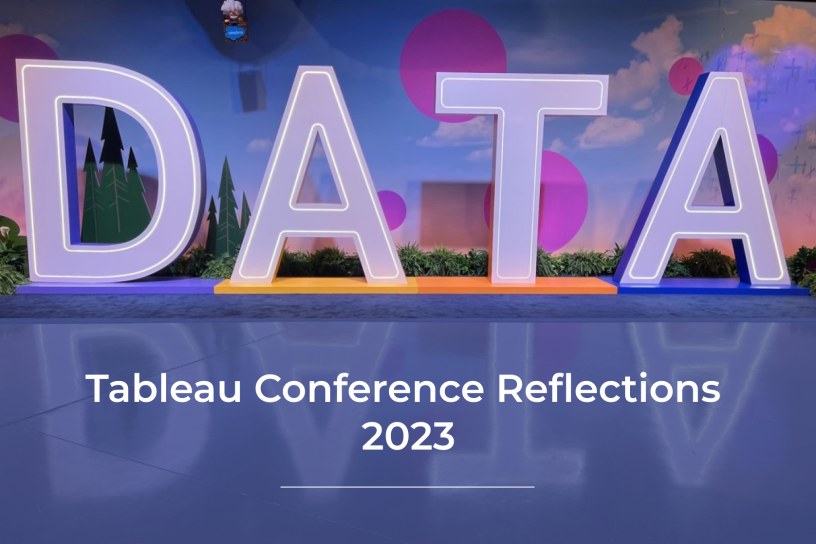Last week I had the pleasure of attending the annual Tableau Conference, held at the Mandalay Bay Convention Centre in Las Vegas; the same venue which hosted the conference in 2017, 2019 and 2022.
This year’s conference was bigger than in 2022 (I’m unsure of the exact attendee numbers this year but there were ~5,000 attendees in 2022) but not as big as the conferences pre-Covid. It’s worth noting that the conference was hybrid, with (limited) free virtual content available for those at home via Salesforce+.
While I don’t intend to recap everything in this post (if you missed the keynotes, you can catch the recordings on Salesforce+), I want to focus on the themes that stood out for me. My experience may not have been the same as yours, especially being a long-time conference attendee. But these are perspectives I share having known what Tableau Conference used to be like pre-Salesforce.
TC23 (Tableau Conference 2023) is the sixth global TC I have attended and continues to be one of my annual highlights. So much so, I have self-funded my trip for the past two years. If you have never attended a TC, you may find it strange to hear that I rate a software conference so highly. However, TC is much more than a conference to me. It’s a family reunion. It’s an opportunity to reconnect with old friends and make new friends too. It’s an opportunity to connect with Tableau and Salesforce leadership face-to-face and meet people in person that I have only ever connected with online. It’s also a time to get inspired and fuel myself with ideas that will see me through the next 12 months.
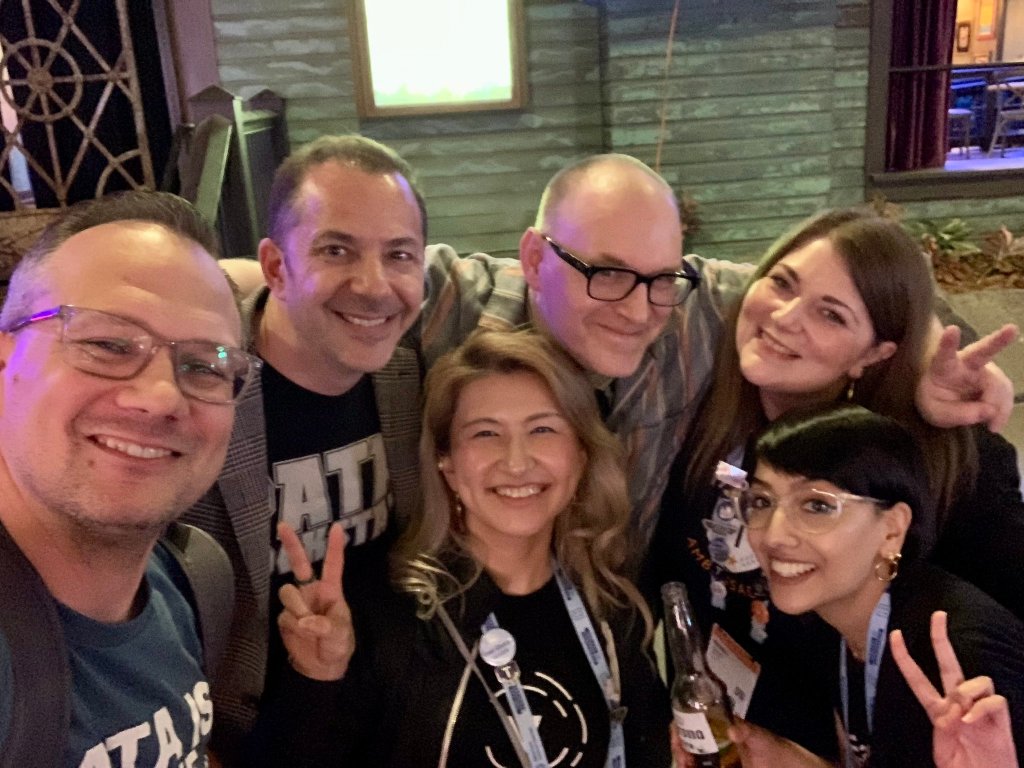
The Overall Experience
This year’s conference did not disappoint! Some things could have been improved but overall it was a great experience and delivered with a bang!
It felt like TC22 was the warm-up to the main event this year! TC23 felt better staged and, in some ways, more carefully planned. There was clear attention to detail in the Data Village and the Salesforce brand was carefully incorporated alongside the more familiar Tableau branding, without losing any of that Tableau magic. The Salesforce styling and ways of doing things brought more sophisticated experiences than we’ve had at previous TCs, but these were cleverly applied to familiar TC experiences like Tableau Doctor or the Tableau Public Viz Gallery.
However, some familiar TC features that were missing this year, most noticeably Braindates and the Data Playground (swings and see-saws in the Data Village). The absence of these, along with a lack of relaxed seating spaces, made connections with others, particularly those outside of the community, more difficult. Likewise, challenges with the content pavilion, scheduling and general logistics also impacted the overall conference experience.
Rather than dwell on what could have been, I would like to celebrate the key themes that stood out for me this year:
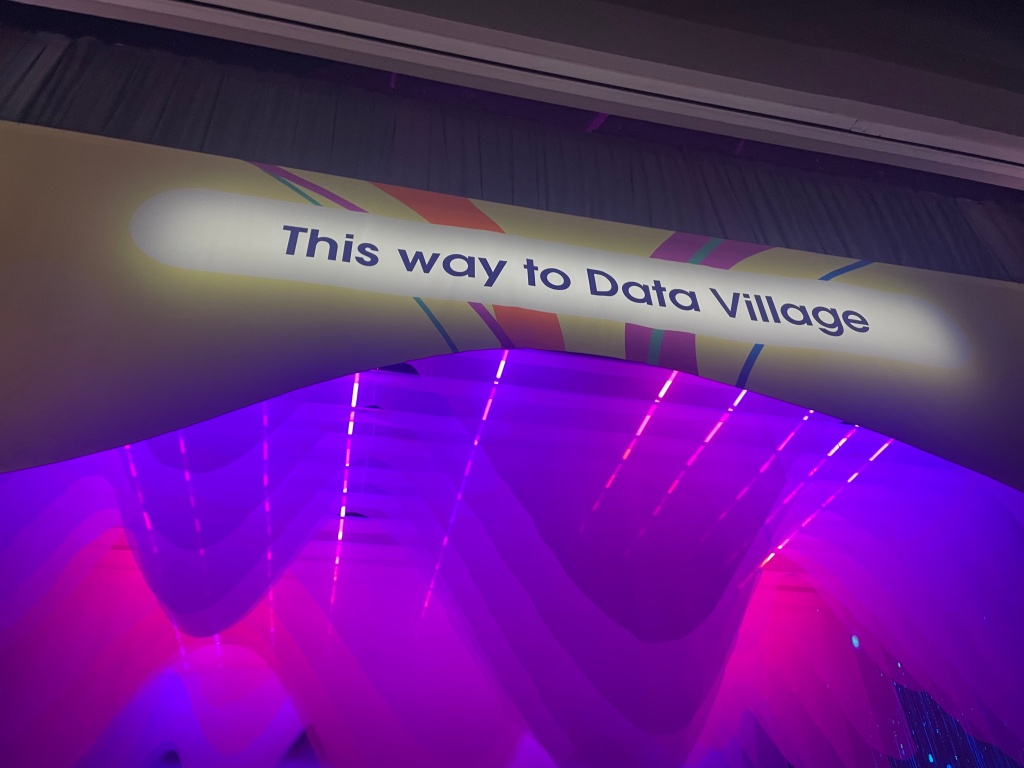
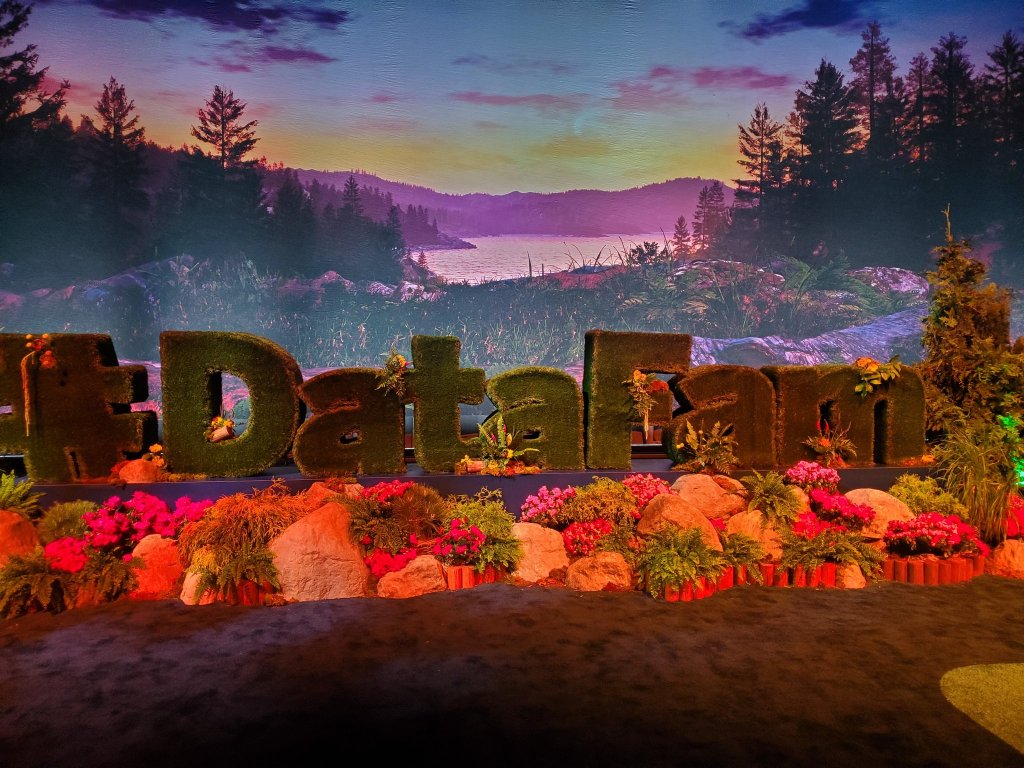
Conference Themes
Various themes stood out for me this year, including:
- 1. The celebration of diverse community sub-groups
- 2. The openness and honesty offered by Tableau Leadership
- 3. The focus on next-gen product innovations
- 4. The Tableau Community is stronger than ever
Let’s explore these in more detail:
#1: The Celebration of Diverse Community Sub-Groups
It was great to see diverse community sub-groups recognised, accommodated and celebrated at TC this year. There’s still a long way to go for some of these groups, but I think progress was made this year.
The pre-scheduled, focused community meetups in the Data Village gave like-minded individuals the opportunity to connect with other community members in a safe, relaxed setting. I had the pleasure of joining two of these meetups (ComuniDatos and Black in Data) and on both occasions, the room was buzzing with people making new connections! I can’t recall if community meetups have taken place before but even if they have, there were certainly more focused groups on the agenda this time and first-time community meetups for groups like Black in Data and Data Pride.
The ComuniDatos and Japanese communities showed up with force this year! Both groups had a strong presence at TC, with the Japanese community bringing over 100 members to the conference! Meanwhile, both groups got a mention during the opening keynote, with a special shout-out to the ComuniDatos community from Tableau’s Head of Product, Pedro Arellano, who even wore the ComuniDatos during his keynote address!
It’s so important that these groups have a safe space to connect at events like these. Likewise, connections made at TC can continue throughout the year with on going collaborations and specialist user groups. A great example of this is the Data Pride TUG, which was just an idea a year ago but since TC22, it’s been brought to life.
To improve things even further, I would love to see foreign-language sessions added to the agenda at TC24. With so many non-native English speakers in attendance, it makes sense to offer a selection of sessions in other languages. These could be delivered on smaller stages, away from the main breakout sessions.
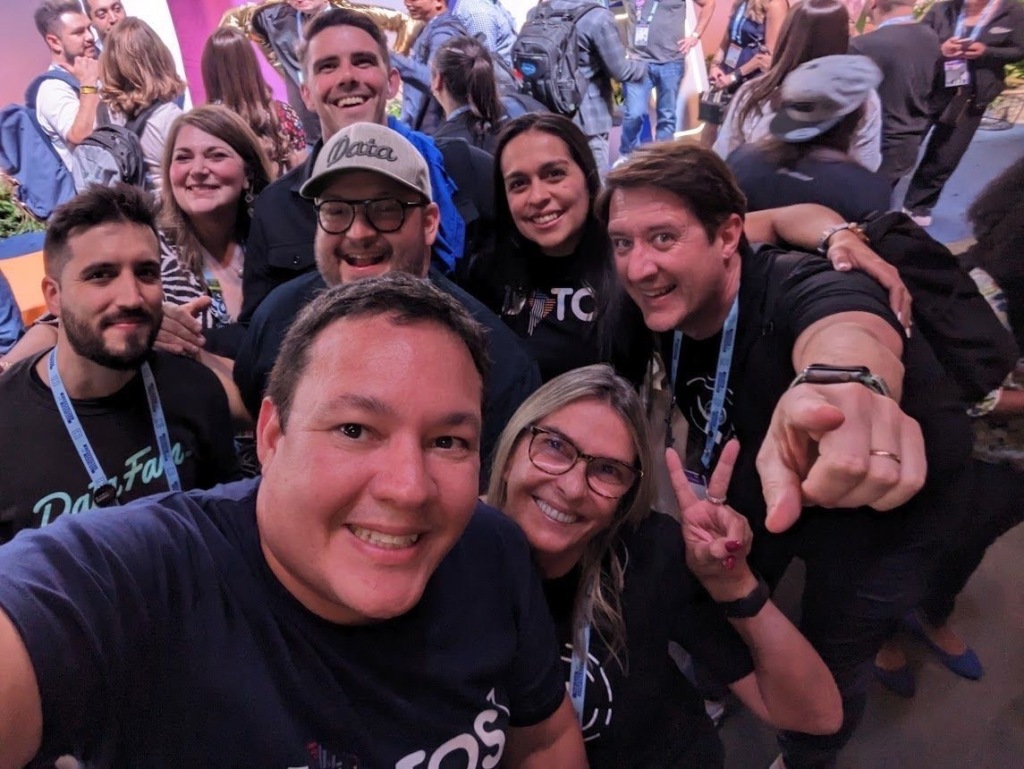
#2: The Openness and Honesty Offered by Tableau Leadership
TC23 saw the first ever Tableau ‘True to the Core’ keynote session; a Q&A-style forum panel hosted by Chief Product Officer (Tableau), Francois Ajenstat. The panel was composed of Tableau and Salesforce leaders, including:
- Ryan Aytay, President & CEO, Tableau
- Volker Metten, VP, Product Management, Salesforce
- Caroline Sherman, VP, Product Management, Salesforce
- Padmashree Koneti, VP, Product Management, Salesforce
- Pedro Arellano, SVP & GM, Tableau
- Harveen Kathuria, Senior Director, Product Management, Salesforce
‘True to the Core’ sessions take place at Dreamforce each year, offering an unfiltered view into Salesforce’s forward-looking roadmap. making it a consistently popular and highly anticipated session. However, this was the first time it’s ever been held at TC.
The session was well-attended and in addition to the leaders on stage, a number of Tableau product developers were sitting in the front rows to be on hand to answer questions. Questions from the audience came in thick and fast, with common themes emerging around the pressure to move to Power BI, accessibility features, much-wanted Tableau Desktop feature enhancements and the availability of Postgres data on Tableau Cloud.
What stood out for me was the openness and honesty shared by the leaders in response to these questions. In many respects, they recognised they could do better and seemed to genuinely want to connect with customers to get to the route of their issues or requests. As a community leader, I have the privilege of being about to meet with Tableau leadership or Product Managers to share feedback. However, for many others, this is often not the case and it can be difficult to get their voices heard.
The session lasted for an hour but could have easily gone on for 90 minutes or longer. As it came to a close, there were still people waiting in line to ask questions.
Thank you to the Tableau leadership team for your honesty and commitment to improve things for the better.
I would love to see this session return at TC24, ideally with a bigger room and longer format.
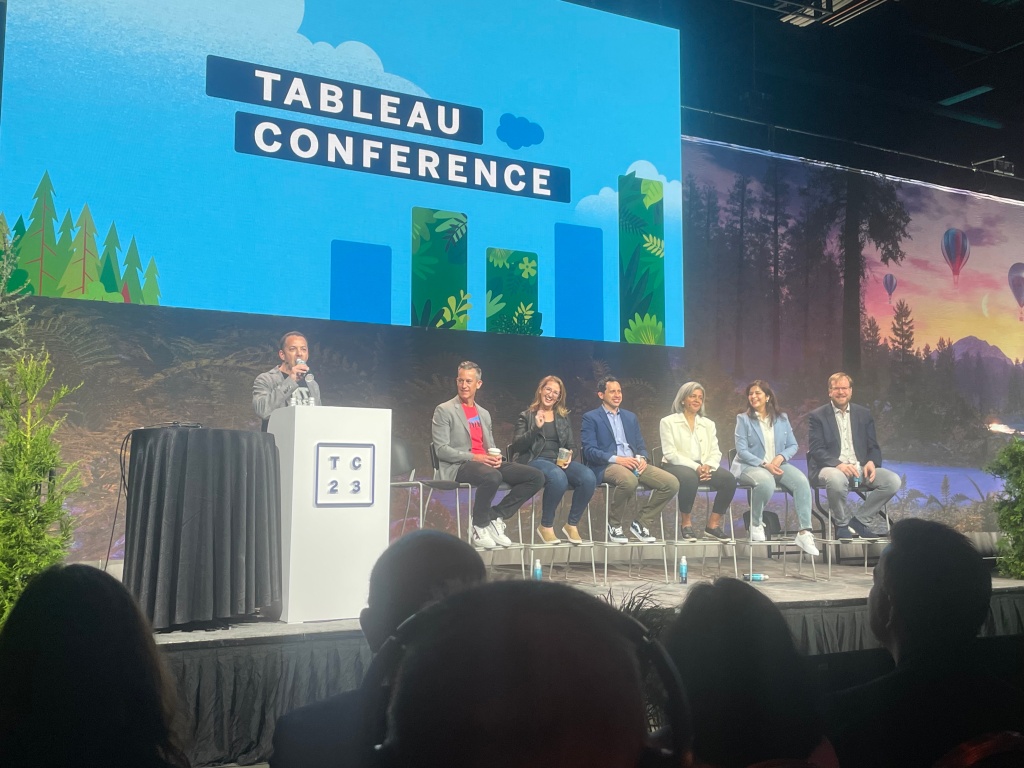
#3: The Focus on Next-Gen Product Innovations
There were three stand-out product announcements during the Opening Keynote/Devs on Stage:
- Tableau GPT, including Tableau Pulse
- Tableau Gestures
- VizQL Data Services
These new product innovations use generative AI to simplify analytics and reimage data experiences.
Tableau GPT leverages generative AI in partnership with the Tableau analytics engine to deliver experiences that can help organizations become smarter and make decisions faster. Using Tableau GPT, users can interact with conversational interfaces where analysis feels more like Q&A, anticipating questions people might ask, or suggesting questions they might not have thought of otherwise. Tableau GPT can even summarise insights as text.
Tableau Pulse (part of Tableau GPT) is a reimagined data experience for consumers designed to help make data accessible to everyone in your organisation, regardless of their familiarity with data. With Tableau Pulse, data consumers will be able to receive personalised metrics that are easy to understand and act on. Tableau Pulse will automatically generate insights in plain-language format, enable on-demand exploration, and help to accelerate data model and dashboard creation so that organisations can deliver analytics at scale.
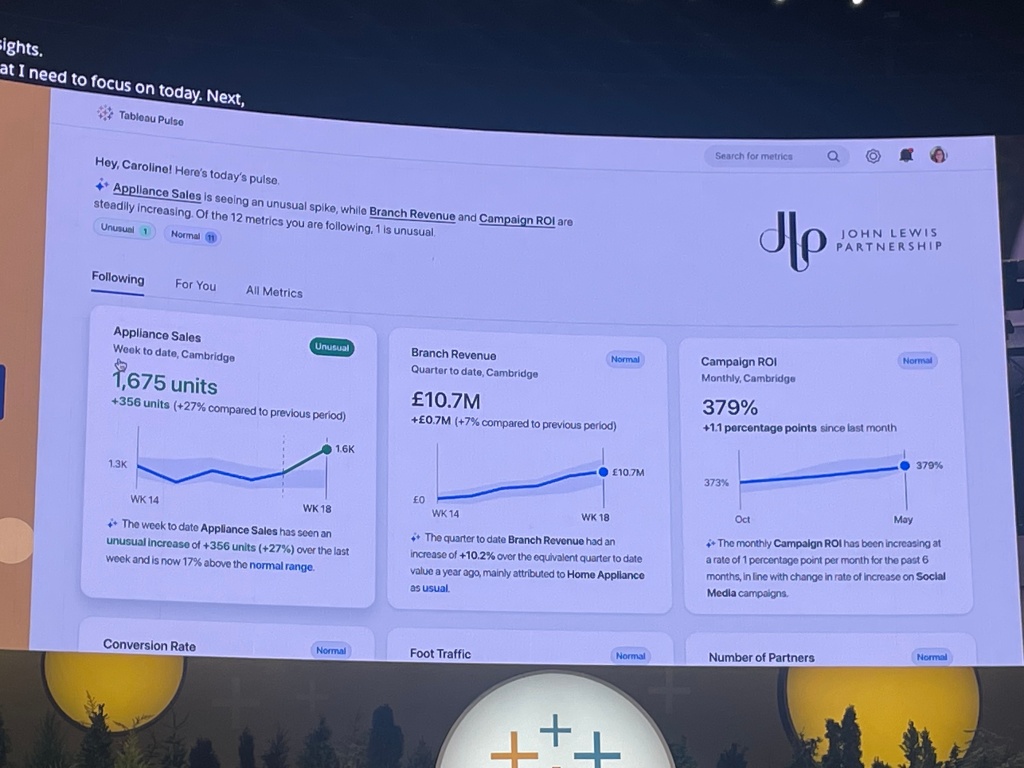
Both Tableau GPT and Tableau Pulse are designed to help users, even those not familiar with Tableau, to get more out of the product with personalised insights and experiences.
Tableau Gestures are live, interactive vizzes composed over webcam video (if you attended London TUG in February 2023, you’ll recall Francois Ajenstat demoed an early version of this feature there). Gestures re-imagines what virtual data storytelling can be, enabling users to compose data stories live on screen using natural hand gestures.
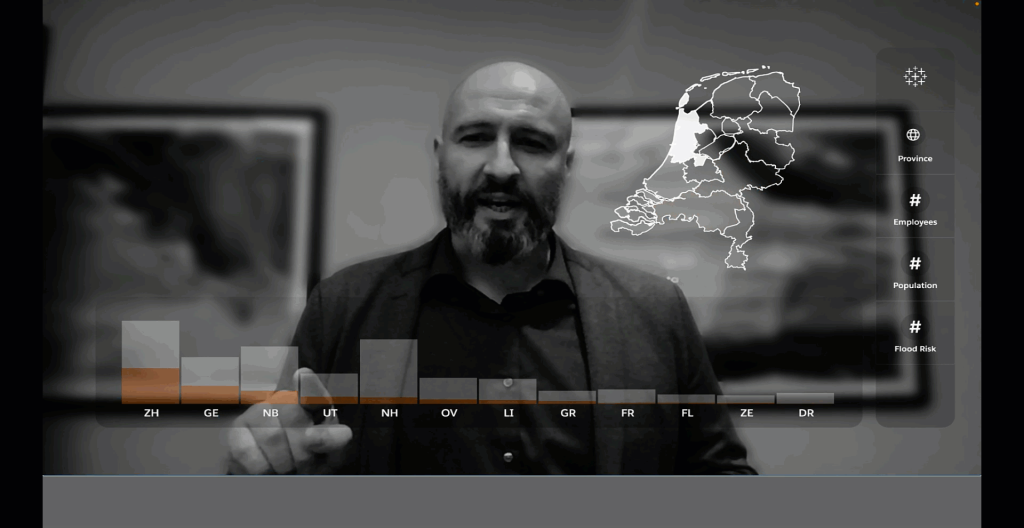
VizQL Data Services are a layer that sit on top of your published services and existing dashboards that let you take the underlying data models and apply them programmatically across other applications outside of Tableau.
The simple programming interface allows developers to build new data products without needing the help of a data expert. This is useful if you need to integrate insights from Tableau into an automated business workflow or perhaps create a chatbot that interacts with your analytics in Tableau.
All of these features will help to transform the way we deliver analytics through Tableau. I’m personally excited for the future!
#4: The Tableau Community is Stronger Than Ever
The Tableau Community showed up at TC23!
While TC22 was a fantastic reunion after a 2-year conference hiatus due to Covid, it felt like the community were even more present this year. Not only that but the community were celebrated in many aspects of the conference. From Visionaries on Stage during the Opening Keynote, to a vibrant community area in the Data Village and the professional pictures of #Datafam members scattered around the venue, the community presence was clear for all to see.
There were more community-led break-out sessions on the agenda than I ever recall there being before. This allowed numerous community leaders the opportunity to speak; not just Tableau Visionaries but Ambassadors and other leaders too. There were also four hands-on community project sessions covering #MakeoverMonday, #WorkoutWednesday, #B2VB and #PreppinData. For #B2VB and #PreppinData, this is the first time they’ve had the opportunity to run a hands-on session at TC.
These things didn’t happen by chance. As Community Leaders, we give immense thanks to the Tableau Community team that work tirelessly all year round to ensure our voices are heard and represented at TC.
I hope the strong community presense at TC has encouraged more customers to join the community and get involved. I truly believe that the Tableau Community is one of Tableau’s strongest USPs so any investments here will only help to strengthen the Tableau product, user base and overall customer experience.
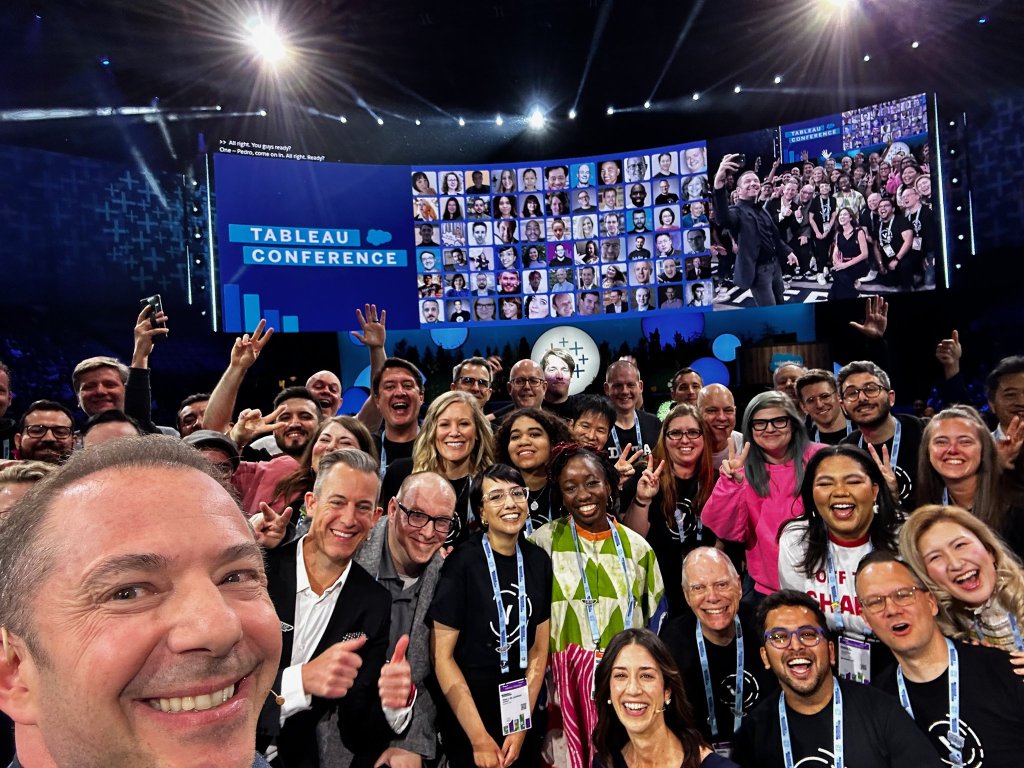
Suggestions for the Future
As mentioned at the beginning of this post, there were a few aspects of TC that I believe could have been better this year. I appreciate that organising a conference is a huge undertaking for all involved. However, with a few minor tweaks to the set-up and logistics, I believe we can create an even better conference experience for all.
While I can only speak for the things I experienced myself, I’m running a short feedback survey for community members to share their feedback. This feedback is anonymous and will be consolidated into key themes before being shared with the Tableau Leadership Team.
Submit your feedback here.
Key areas for improvement I would suggest for TC24 are:
#1: Bring back seating reservations for breakout sessions
This year, all sessions were run on a first-come, first-served basis. This caused disappointment for attendees who were unable to enter their chosen session due to it being full. In some cases, attendees were queuing for sessions up to an hour in advance of the start time. This was not practical and led to attendees being unable to attend as many sessions as they would have liked. Not only that but it results in a more stressful experience for attendees who are running between sessions to ensure they can get a seat, particularly for those with disabilities. Reserved seating has worked well in the past to eliviate these pressures and I would like to see it return for TC24.
#2: Provide ample seating for popular sessions
Tied to point #1, many of the popular sessions filled up quickly. In some cases, attendees were still able to join by standing at the back or sitting on the floor in the surrounding areas. However, this is not practical. Given attendees were able to favourite sessions in the Salesforce Events App in advance, it would have been helpful to routinely move sessions to adequate theatres, based on perceived interest.
#3: Carefully consider session scheduling to reduce clashes
There were a lot of session clashes this year, in part due to the number of sessions overall but also due to the way the agenda was scheduled. In many cases, there was a 10-minute overlap which made it difficult to attend sessions that overlapped in the same timeslot (especially due to point #1). In some given time slots, there were more than 20 options to choose from! I would have liked to have seen more sessions run on Thursday to help alleviate this problem, with sessions all ending at the same time (i.e. on the hour or at quarter-to).
#4: Record all sessions for paid conference attendees to watch later, on-demand
Given the schedule clashes and the difficulty in getting into oversubscribed sessions, I personally missed a lot of the sessions I would have liked to have attended. Sadly, few sessions were recorded this year so I have no way of watching these sessions unless they are subsequently presented at a TUG or recorded and shared by the speakers in question. In previous years, all content was recorded and made available online. I would like to see this feature return, making content available on demand for paid attendees.
#5: Keep the Data Village open for the entirety of the conference
The Data Village was fantastic this year!
It was packed with a variety of things to do including product demo labs, vendor booths, the famous TC photo booth, the swag store and the Viz Gallery. Sadly, the Data Village closed at the end of Day 2, meaning these features were inaccessible to anyone attending the conference on Day 3. This may have been unavoidable due to the late addition of the third day to the TC schedule. However, this was not well communicated to attendees, leaving many disappointed to find they could not return to the Data Village on Day 3. I personally had little opportunity to interact with the features in the Data Village on Days 1 and 2 and would have greatly appreciated additional time there.
If you attended TC23 in-person, I hope you had a great experience.
Thank you to everyone who approached me during the week to mention my KBYG blog post. I hope you found my advice useful!
I look forward to seeing you at TC24 in San Diego!
Thanks for reading.
